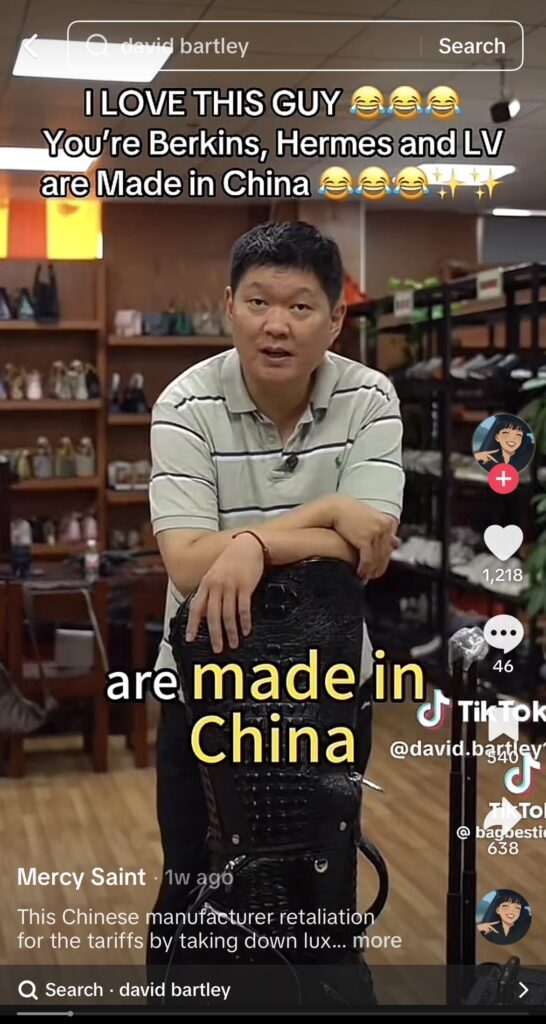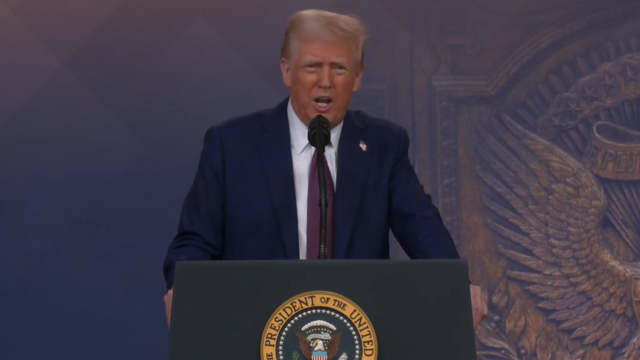In recent weeks, Chinese manufacturers have been flooding TikTok feeds with advertisements to American consumers. These manufacturers claim that well-known Western luxury brands actually manufacture their goods in China. They purport to be selling the same or similar-quality product at a fraction of the price. This social media trend has prompted mainstream media to do damage control on behalf of Western fashion giants.
The U.S.-China trade war has been a bombastic exchange of tit-for-tat tariffs. Despite recent talk of de-escalation, the U.S. is currently leveraging 145% tariffs against China, and China has also levied 125% tariffs on U.S. goods entering the country.
Like all wars, trade wars require not only the exchange of blows, but the rallying of the public and shaping of narratives through propaganda. This recent TikTok trend demonstrates the role mainstream media will play on behalf of America's darling fat cats to protect their profits and markets.
So, how did the controversial social media platform become a battleground for this trade war? With prices set to rise across the board in American markets, Chinese manufacturers have gotten creative: using TikTok to advertise their products directly to American consumers.
These videos take place on shop floors, with influencers advertising their products as identical or near identical to big-name luxury manufacturers at a fraction of the price.
The Chinese manufacturers are claiming to be the Original Equipment Manufacturers (OEM) for major fashion brands, such as Birkin, LuluLemon, and Louis Vuitton. Their videos went viral, gaining upwards of 10 million views on TikTok, sometimes gaining praise with young Americans.

As the trend exploded, western mainstream media outlets have reached out to fashion giants, who all denied that their products are made in Chinese factories and claimed that the goods on display were "high quality counterfeits."
In The Independent's coverage of the trend, they consulted a spokesperson from LuluLemon who claimed that "approximately 3% of its finished goods were made in China" and provided a list of the company's manufacturing partners. Interestingly, this list names myriad companies in China and other Southeast Asian countries that manufacture these goods, which The Independent failed to mention.

CNN consulted a professor at the University of the Arts London for their coverage. When asked if luxury handbags and watches are actually produced in China rather than in Europe, experts gave readers an informative non-answer—that it is "impossible" to tell if any given product is made in China, Sri Lanka or Europe, as luxury manufacturers will produce whatever they can get away with in China and assemble enough of the final product to get that prestigious "Made in France/Italy/America" tag.
According to the article, these big brands may be required to manufacture complex components in China out of necessity, lacking the capability to machine complex components in their own countries.
Canada's own CBC outright claims that this explosion of Chinese advertisements could be part of a state-run Chinese propaganda campaign to "implicitly put the blame of rising prices on the Americans." CBC says it's "impossible to tell" if these videos were made by real Chinese manufacturers or the Chinese state.
The CBC's own interview with Samuel Roscoe of the University of British Columbia's business school somewhat undermines this fear-mongering. He explains that "some of the posts do describe roughly how our supply chains work." Roscoe is referring to Western companies which award contracts to Chinese factories to produce their products. Then, when the contract expires, factories will have excess product to sell.
Not only do these Chinese advertisements expose big luxury brands, they highlight just how damaging a trade war between the U.S. and China will be for the American consumer, suggesting that if everything is made in China, everything will be 145% more expensive.
The Trump administration's trigger-happy application of tariffs is demonstrating just how much chaos is built into the global supply chain. U.S. and European companies have become addicted to the abundance of cheap labour afforded in countries such as China or Sri Lanka. Western companies chose to offshore to China for access to a cheap labour pool with little oversight and reaped massive profits. Today these same companies now claim to be victims of Chinese IP theft and counterfeiting.
Regardless of whether these Chinese products are on par with their western counterparts, mainstream media was quick to deliver damage control for luxury clothing brands to protect their reputations and the lucrative "luxury" label.
DHgate, an app known to sell dupes of luxury goods, jumped to second in the U.S. Apple App Store after the TikTok posts went viral. This social media trend is more than Chinese factories "trolling" or "peddling knockoffs." It's another signal that China is willing to compete with the United States.
This tête-à-tête between the U.S. and China is likely to continue into the foreseeable future. As these two giants barrel towards more extreme confrontation, workers will need to brace for shortages, inflation, and political instability.


